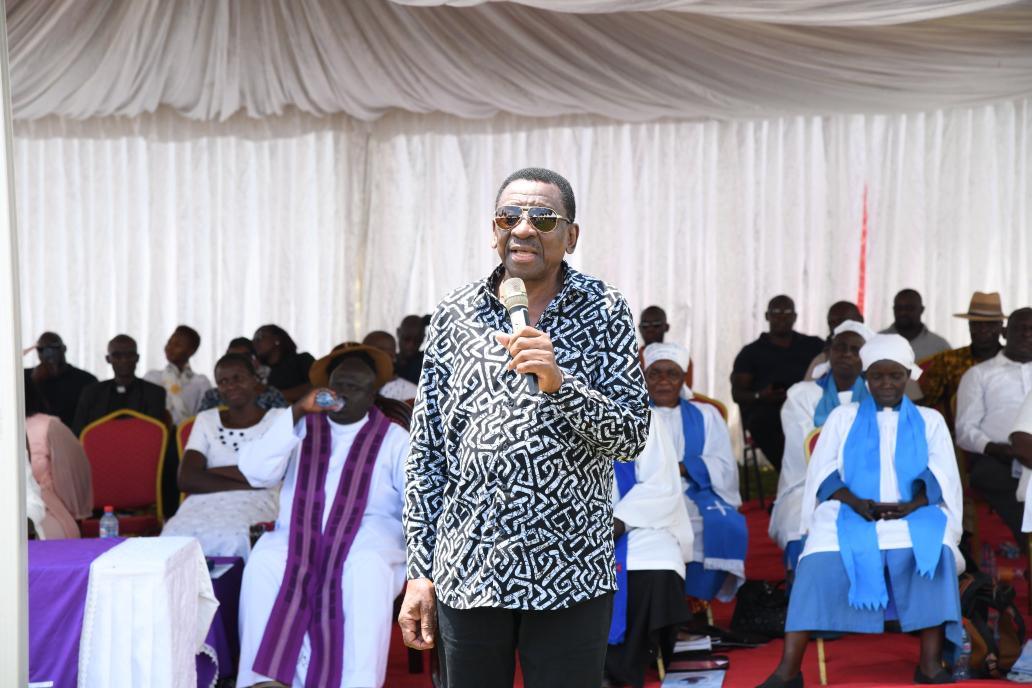Siaya County has emerged as the lowest performer in own-source revenue collection in the 2024/2025 financial year, a new report by the Controller of Budget (CoB) reveals.
The county, under Governor James Orengo, achieved only 47 per cent of its revenue target, placing it at the bottom among all devolved units. According to the CoB, Siaya generated Sh436.68 million during the year, with the hospital’s Facility Improvement Fund (FIF) making up 67 per cent of the amount.
The report shows that the county’s top revenue stream was single business permits, which brought in Sh90.6 million, followed by other revenues at Sh55.8 million (8 per cent), and market fees at Sh34.69 million (5 per cent).
Bus parks contributed Sh15.74 million, advertisements Sh13.94 million, while parking and stall fees each accounted for 1 per cent. Despite the underwhelming performance, the total collection reflected a slight improvement of 2 per cent from the Sh427.97 million raised in 2023/2024.
The Controller of Budget noted that Siaya’s revenue accounted for only 6 per cent of the equitable share allocated to the county. “At the beginning of the financial year, the county had outstanding revenue arrears of Sh363 million,” the CoB reported.
“This amount decreased to Sh290 million as of 30th June 2025, indicating that the County had reduced its arrears by Sh73 million.”
In the 2024/2025 financial year, Siaya’s approved budget stood at Sh10.94 billion, with Sh4.87 billion (45 per cent) set aside for development and Sh6.07 billion for recurrent expenditure.
The county had projected to raise Sh1.04 billion—10 per cent of the budget—through its own revenue. “The own-source revenue comprised Sh643 million (62 per cent) deposited into the County Revenue Fund and Sh400 million (38 per cent) as Appropriations-in-Aid (A-I-A) spent at source,” the CoB explained.
Of the A-I-A funds, Sh283 million (71 per cent) came from FIF, Sh63 million (16 per cent) from Linda Mama, and Sh52 million (13 per cent) from NHIF/Capitation. Nairobi also recorded a weak performance at 66 per cent, with other poorly performing counties including Kajiado (55 per cent), Machakos (56 per cent), Isiolo (58 per cent), Taita Taveta (64 per cent), Bungoma, Kisumu and Kakamega, all at 65 per cent.
The report indicated that overall, counties underperformed by 23 per cent against their Sh87.67 billion revenue target, undermining budget execution and leaving many unable to carry out planned programmes.
“Underperformance in OSR collection indicates that county governments could not implement all planned activities due to budget deficits,” the CoB stated.
To mitigate this, CoB Margaret Nyakang’o urged counties to adopt effective revenue enhancement strategies and set achievable targets for 2025/2026.
She cautioned that heavy reliance on health facilities for revenue, coupled with arrears amounting to Sh124.95 billion, was worsening financial stress.
While some counties struggled, 12 surpassed their revenue targets. Kisii led by collecting Sh982.09 million, which was 178 per cent of its target.
It was followed by Tana River at 133 per cent, Mandera and Wajir at 123 per cent each, Kirinyaga (122 per cent), Garissa (120 per cent), Vihiga (117 per cent), and Samburu (110 per cent). Meru reached 106 per cent, Elgeyo-Marakwet 104 per cent, Homa Bay 101 per cent, while Turkana hit its 100 per cent target.
The CoB linked this strong performance to factors such as under-budgeting and in some cases exclusion of FIF in revenue planning.
“Revamped revenue streams, such as gypsum extraction in Tana River and tourism revenue from the Samburu National Reserve, contributed substantially to county revenues,” the report noted.
Automation of collection systems and better infrastructure also boosted results. Counties that achieved progress were encouraged to set higher targets for the current financial year.
The CoB reminded counties that Article 209(3) of the Constitution empowers them to raise revenue through property rates, entertainment taxes, and other approved taxes to supplement national transfers. Despite this, counties have consistently struggled to meet their revenue potential since devolution began.
The report further highlighted that counties are grappling with huge financial backlogs, with pending bills hitting Sh176.80 billion by June 2025, over half of which are less than three years old.
Revenue arrears across counties stood at Sh1.57 trillion, comprising ordinary OSR arrears of Sh112.14 billion (90 per cent), FIF arrears of Sh12.47 billion (10 per cent), and other arrears of Sh331.3 million.
On development spending, most counties fell short of the required 30 per cent threshold.
Only seven counties; Nandi, Trans Nzoia, Narok, Meru, Kericho, Mandera, and Kirinyaga, accounted for about Sh22 billion of the total development spending by all devolved units in 2024/2025. Nandi posted the highest development absorption rate at 90 per cent, followed by Trans Nzoia (77 per cent), Narok (74 per cent), Meru (73 per cent), while Kericho, Mandera and Kirinyaga stood at 72 per cent each.

